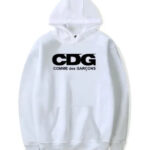The Global Baby Products Market is witnessing strong and steady growth, fueled by rising parental awareness, increasing demand for premium products, and a significant shift in purchasing behavior. According to recent market data, the market size is expected to grow from USD 321.5 Billion in 2023 to USD 575.8 Billion by 2033, expanding at a CAGR of 6.0% during the forecast period from 2024 to 2033. This trend showcases a robust future for stakeholders across the value chain, including manufacturers, retailers, and investors.
🌏 Asia Pacific Leads with a Dominant 43.6% Market Share
In 2023, the Asia Pacific region led the global baby products market, capturing a 43.6% market share and generating USD 140.1 Billion in revenue. This growth is largely attributed to the rising birth rate, urbanization, and increasing disposable income across countries like China, India, and Southeast Asian nations.
Additionally, the emergence of e-commerce platforms and heightened awareness about child hygiene and nutrition have strengthened the regional market. Local governments and health authorities have also promoted infant and maternal care, further supporting the industry.
🍽️ Baby Food Tops Product Categories with 26.2% Share
Among the product segments, baby food maintained its lead in 2023 with a 26.2% share of the global market. The increasing number of working parents and the growing preference for convenient, nutritious food options have driven demand for ready-to-consume baby food products.
Parents today are more informed and cautious about what they feed their babies. This has led to a surge in demand for organic, fortified, and allergen-free baby food items. As a result, companies are investing heavily in research and development to introduce innovative formulations that meet modern nutritional standards.
🏷️ Mass Products Rule the Market with 77.2% Share
In terms of product type, mass-market baby products dominated the global industry in 2023, accounting for a substantial 77.2% share. These products cater to a wide demographic, especially in emerging economies where affordability remains a primary consideration.
From diapers and baby wipes to lotions and bath essentials, mass products are favored due to their accessibility and value for money. The rising middle class and a growing number of nuclear families have further strengthened this segment’s position.
🛒 Hypermarkets & Supermarkets Drive Sales with 37.2% Share
When it comes to distribution channels, hypermarkets and supermarkets held the dominant position in 2023, contributing 37.2% to the overall market share. These outlets offer a one-stop solution for all baby care needs, with a broad selection of brands and competitive pricing.
Parents prefer shopping in physical stores where they can compare products and check quality first-hand. However, the convenience of online shopping, subscription models, and doorstep delivery are quickly reshaping distribution trends, particularly in urban and tech-savvy populations.
🧼 Competitive Landscape: Industry Giants and Rising Innovators
The baby products industry is characterized by the presence of both well-established global brands and fast-growing startups. Major players include:
-
Johnson & Johnson Services, Inc.
-
Procter & Gamble (P&G) Co.
-
Kimberly-Clark (KCWW)
-
Honasa Consumer Pvt. Ltd.
-
The Himalaya Drug Company
-
Citta World
-
Sebapharma GmbH & Co. KG
-
Beiersdorf
-
California Baby
-
Unilever PLC
-
Nestle S.A.
-
Other Key Players
These companies are investing in innovation, sustainability, and market expansion through mergers, acquisitions, and strategic collaborations. The focus remains on offering safer, more sustainable, and high-performing products to meet growing consumer expectations.
📈 Key Growth Drivers in the Baby Products Market
Several macroeconomic and consumer behavior trends are shaping the future of this market:
-
Increasing birth rates in developing regions
-
Growing demand for premium and organic baby care items
-
Expansion of digital retail and direct-to-consumer channels
-
Rising awareness around infant hygiene and nutrition
-
Innovation in product design, packaging, and formulations
These factors are not only contributing to market expansion but are also opening new avenues for investment and business development.
💡 Strategic Opportunities for Market Players
Businesses looking to capitalize on this growth should focus on:
-
Launching eco-friendly and hypoallergenic product lines
-
Leveraging digital platforms for marketing and distribution
-
Building trust through transparency and safety certifications
-
Targeting untapped rural and semi-urban markets
-
Customizing products to cater to regional skin types and climates
Companies that successfully align their strategies with these consumer expectations are poised to gain a competitive edge.
🔍 Final Thought: A Market Full of Potential
The baby products market is more than just diapers and toys—it’s a reflection of shifting global lifestyles and parental priorities. With a projected valuation of USD 575.8 Billion by 2033, this industry presents a wealth of opportunities for innovation, investment, and impact.
Whether you’re a brand owner, distributor, or investor, now is the ideal time to explore this dynamic and rewarding market. For custom research, trend analysis, or go-to-market strategy consultation, reach out to our market research experts today.
- The Power of Branding in Baby Care Industry
- The global baby products market will reach USD 575.8 Billion by 2033, growing at 6.0% CAGR. In 2023, Asia Pacific led with 43.6% share. Baby food held 26.2%, mass products 77.2%, and hypermarkets/supermarkets 37.2% of the market.
- babycaremarket, globaltrends
Related posts:
 Online Kundali: Generate Free & Accurate Kundali just in Minutes
Online Kundali: Generate Free & Accurate Kundali just in Minutes
 Office Janitorial Services Woodfin, NC: By Clean Environments of Asheville, Inc.
Office Janitorial Services Woodfin, NC: By Clean Environments of Asheville, Inc.
 Custom Concrete Work in Spanish Fork, UT: By Elevated Landscape & Concrete
Custom Concrete Work in Spanish Fork, UT: By Elevated Landscape & Concrete
 Godspeed Hoodie Brushed Fleece Comfort for Every Step of the Journey
Godspeed Hoodie Brushed Fleece Comfort for Every Step of the Journey
 Syna World: Exploring the Immersive Universe Created by Central Cee
Syna World: Exploring the Immersive Universe Created by Central Cee
 Comme des Garçons Deconstructing Fashion with Avant-Garde Vision
Comme des Garçons Deconstructing Fashion with Avant-Garde Vision
 Tree Removal the Right Way: What to Expect from a Professional Tree Service
Tree Removal the Right Way: What to Expect from a Professional Tree Service
 The Timeless Appeal of Pleated Dress: A Must-Have in Every Woman’s Wardrobe
The Timeless Appeal of Pleated Dress: A Must-Have in Every Woman’s Wardrobe








